THE principles of carbon grazing are not well known, but it’s not new science. It is just a different way of managing the land and it’s proving an environmental success for farmers across the country.
In the past, carbon has attracted a bad reputation in agriculture. Carbon emerged as the world grappled with climate change policy and focused on carbon stocks in the soil, not how it flowed. Yet the element’s role as the very building block of life – all living things contain carbon in some form – makes its management a key consideration of agriculture, especially grazing.
Recycling carbon for grazing
Alan Lauder, a retired pastoralist from south-west Queensland, coined and patented the term carbon grazing in 2001, but was using the principles long before that. He says, in his experience, as soon as you mention carbon grazing, people immediately turn off. But one of the light-bulb moments for livestock producers is when he explains how carbon fits into their systems.
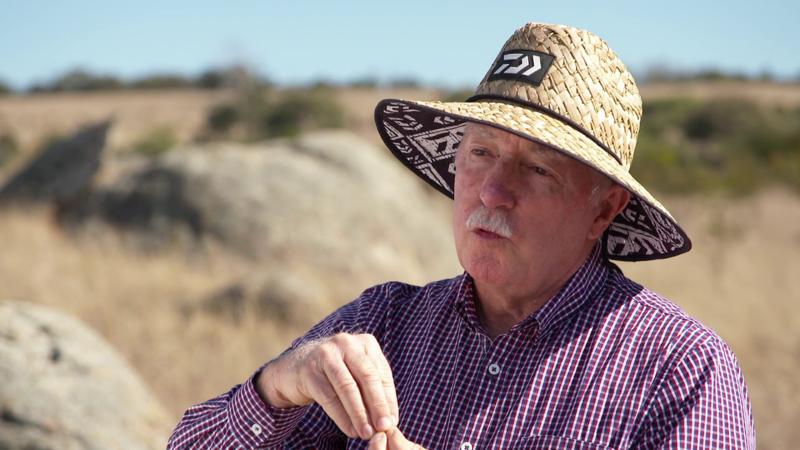 Carbon grazing expert Alan Lauder. Source: supplied.
Carbon grazing expert Alan Lauder. Source: supplied.
“I ask them if they know that cows are 18% carbon and if they had considered that grass is 45% carbon,” Alan says. “A producer’s day job is recycling carbon. They set out to turn some of the carbon that is flowing through the paddock into saleable carbon products like meat and grain.
“The more the carbon flows, the more cattle they have to sell. So selling cattle is harvesting carbon when it has entered the cattle part of the food chain.”
 These two photos were taken just 10m apart on a farm in the NSW Murray to show how grazing management impacts carbon flows. One side of the fence is used as a stock route, so carbon flows are managed and growth is prolific. The other side is stocked, so soil carbon is depleted and the ground is bare. Photography courtesy of Patrick Francis, Jerilderie.
These two photos were taken just 10m apart on a farm in the NSW Murray to show how grazing management impacts carbon flows. One side of the fence is used as a stock route, so carbon flows are managed and growth is prolific. The other side is stocked, so soil carbon is depleted and the ground is bare. Photography courtesy of Patrick Francis, Jerilderie.
Spelling pastures key to carbon grazing
The principle is to spell pastures for four-to-six weeks after rain, to maximise the flow of carbon from the atmosphere through the grass (via photosynthesis during plant growth) and into the landscape.
“Carbon grazing is the short-term removal of animals from pastures after rain,” Alan says. “Pasture rest is long enough when sufficient carbon has flowed to all parts of the landscape it needs to, including below the ground.
“Scientists I met in South Africa carried out research which suggested, with average pastures, removing animals for three to eight weeks after rain increased pasture production by 50% to 80%.”
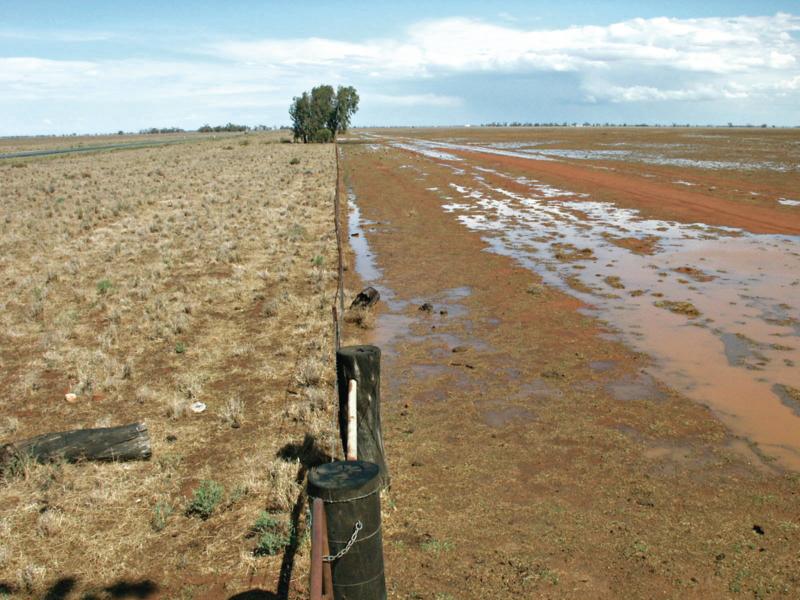 Another shot, taken seven years previously, of the property in the NSW Murray that has a stock route to the left of the fence that is intermittently grazed, and a paddock to the right that is constantly stocked. After rain, water pools in the right paddock and can’t enter the soil due to low carbon levels and lack of plant roots.
Another shot, taken seven years previously, of the property in the NSW Murray that has a stock route to the left of the fence that is intermittently grazed, and a paddock to the right that is constantly stocked. After rain, water pools in the right paddock and can’t enter the soil due to low carbon levels and lack of plant roots.
Timing a key carbon grazing principle
It is the timing of pasture rest rather than the length of time that is important, says Alan, with factors such as temperature and the quality of plants influencing how well pastures respond after rain.
Alan’s principle of carbon grazing is about how carbon flows through the system, not about how much is left in the soil (stocks). “We are too focused on just soil carbon,” he says, explaining that livestock management practices can increase or decrease the flow of carbon through paddocks.
Livestock nutritionist Will Robinson from PPS Beef at Meringandan in Queensland has been helping producers find ways to provide rest periods after rain along the carbon grazing principles. He advises clients across Queensland and NSW and says even at feed costs of $600/tonne, the end result of feeding stock in order to rest pasture makes financial sense.
“One tonne of feed allows the creation of up to 4,000kg [4 tonnes] of grass over a 12-month period that would otherwise have been eaten,” Will says. “That 4,000kg of grass is 45% carbon, so 1,800kg of carbon stays in the grazing system as grass and roots. The higher the amount of carbon in the soil, the greater the ability of the soil to store moisture, which means any rain that does fall is stored, allowing pasture growth.”
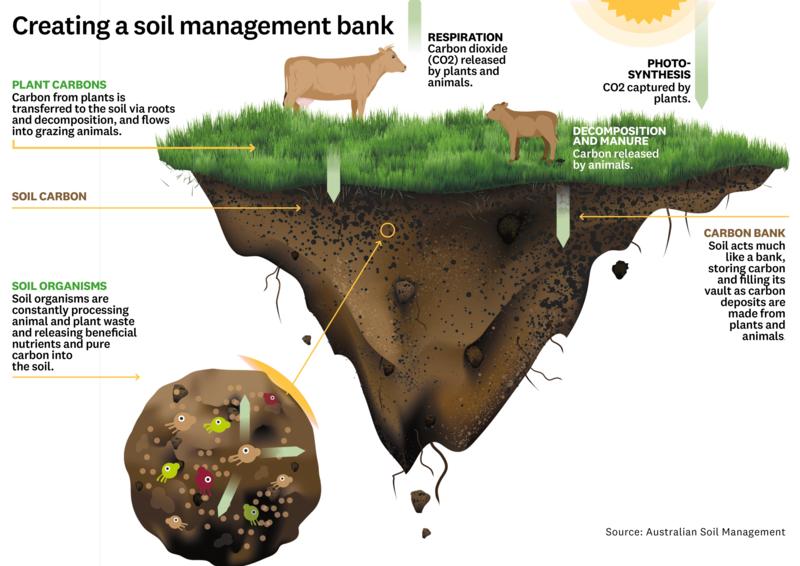 How to create a soil management bank to assist with carbon grazing.
How to create a soil management bank to assist with carbon grazing.
Carbon is constantly moving
Alan Lauder says carbon is always moving – both above or below the ground. “When cattle eat grass, carbon is moving from one life form to another life form,” he says. “Below ground, carbon also keeps moving and maintaining soil life that is responsible for keeping soil well-structured and fertile.”
Managing carbon flows is a delicate balancing act. If animals dominate plants, carbon flows are reduced, but if animals aren’t there at all, pastures become rank (tall and coarse) and have a lower capacity to introduce carbon.
“All else being equal, the grazing paddock that has the most carbon flowing through it will be the most productive and resilient,” Alan says.
“Soils with more carbon flowing through them are more resilient because they have improved water infiltration, increased water-holding capacity and greater fertility.”
While Alan was focusing on carbon grazing, others were achieving similar goals of more carbon in the soil and better carbon flows by making structural changes to the landscape. In Western NSW, water ponding and water spreading – systems of banks used to either prevent rainfall run-off or improve distribution from waterways – have been used to improve soil moisture levels. This allows pasture species to survive and thrive in areas where there has been no ground cover at all.
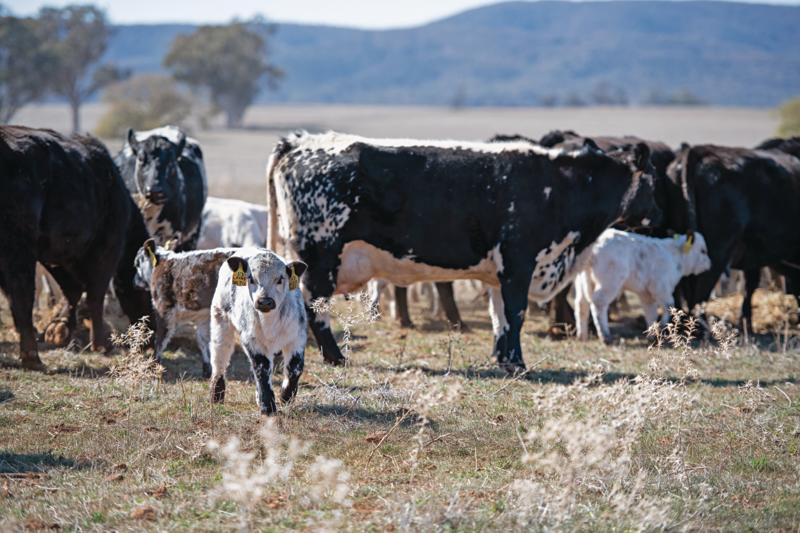 Cattle are an important part of carbon grazing. Photo by: Pip Farquharson.
Regenerating fragile land
Cattle are an important part of carbon grazing. Photo by: Pip Farquharson.
Regenerating fragile land
Ray Thompson, a recently retired senior land services officer with Local Land Services, has decades of experience working with the fragile soils around Nyngan in Central West NSW. He says water ponding and spreading have regenerated tens of thousands of hectares of land in the region for grazing.
“We start with getting some annuals growing on claypans and then the perennials move in,” Ray says. More vegetation and ground cover lead to increased carbon levels, which improve moisture retention and can transform claypans into grazing country.
RELATED ARTICLES ON THE ENVIRONMENT:
-
The rewards of biodynamic farming
-
How dung beetles are helping farmers
-
Building resilience to drought
Work by the Australian National University quantified the lift in soil carbon from the ponding. It showed levels of soil organic carbon lifted from 18.7 tonnes a hectare in the top 30cm to 25 tonnes a hectare after water ponding and revegetation.
“We’d lost 30cm of topsoil from this region through erosion and we were left with heavy cracking clays with a crust on top of it,” Ray says. “We have turned around thousands of hectares of land into productive grazing country. The lifting of carbon in the system was an extra bonus.”
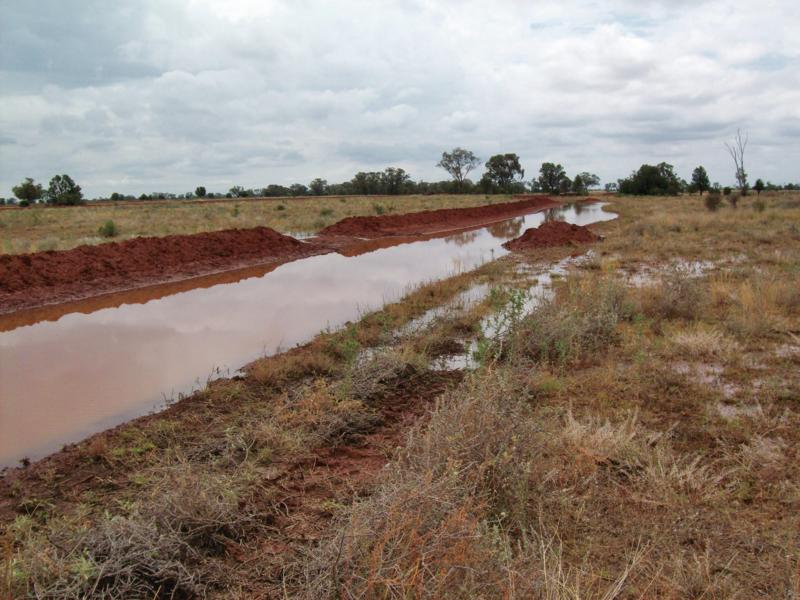 Systems of banks help to build up soil carbon and improve ground cover at Wilgadale in Nyngan. Photography courtesy of Anthony Gibson.
Systems of banks help to build up soil carbon and improve ground cover at Wilgadale in Nyngan. Photography courtesy of Anthony Gibson.
Increasing carbon = increasing vegetation
Nyngan farmer Anthony Gibson has seen the benefits of increasing carbon in the soil on his property, Wilgadale. In just 18 months, he saw ground cover lift from 20% to 90% with the use of water spreading, which has built carbon levels up in his soil.
“We used to get rainfall that would run off our country and flood our woolshed,” Anthony says. “I think people understand now that while there is plenty of talk about phosphorus and nitrogen, carbon is just as important.”
Previously bare areas on Anthony’s farm are now supporting grazing and the species mix has also changed thanks to the higher carbon levels.
NSW Farmers’ Conservation & Resource Management Committee chair Bronwyn Petrie says soil conservation staff and producers have been quietly working to lift the productivity of their land for many years – without necessarily recognising they were boosting carbon at the same time.
“By lifting carbon levels, they have increased productivity, soil biota beneath the soil and improved biodiversity,” Bronwyn says. “The boost in carbon levels has helped them be better prepared for drought.”
The basics of carbon grazing
- Shifts the emphasis from carbon stocks to good management of carbon flows.
- Focuses on the time when the bulk of the carbon flows into the paddock – the short period after rain.
- Rests paddocks for four-to-six weeks after rain by temporarily removing stock.
- Increases production and reduces the effect of drought.
- Increases plant and soil resilience.
- Reduces the methane produced by livestock by improving pasture quality.
Source: carbongrazing.com.au